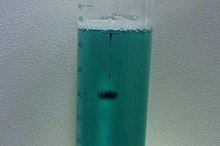Heparin Locks, or Hep Locks, are small tubes attached to a catheter, inserted into the arm and held in place with tape in order to administer drugs and fluids without injecting patients multiple times unnecessarily. Emergency situations require an accessible vein fast; the Hep Lock provides that accessibility. Medicine may be injected easily, making life simple for nursing staff and less painful for patients.
If you are experiencing serious medical symptoms, seek emergency treatment immediately.
Function of a Hep Lock
Heparin Locks (HL) do not contain heparin (anticoagulant) unless used for a heparin flush; however, are used frequently by nurses to keep open a vein for easy access in order to administer drugs, saline, antibiotics or blood without causing unnecessary stress on the patient, while saving time. One of many advantages of using this method is that medication may be given without disturbing the patient while asleep.
Benefits of a Hep Lock
Venipuncture Methods
Learn More
The heplock benefits women in labor in that quick access to a vein allows doctors to administer medication should the woman request an epidural (saddle-block) anesthesia. Other emergencies may be quickly attended to such as cesarean section (c-section), or if suffering hemorrhage post-partum.
Time Frame for Using a Hep Lock
The Hep Lock may be inserted, taped and in use, in as little as three minutes, depending on the patient's type of vein. Some veins "roll" and are difficult to pierce and may take longer. Initial discomfort on insertion of the Hep Lock ultimately saves time, money and other labor-intensive procedures in the long run.
Considerations for Using a Hep Lock
What Are the Treatments for an Arm Blood Clot?
Learn More
Heparin is an anticoagulant used to prevent blood clots forming in the arteries, lungs or veins. Between uses of the Hep Lock, a nurse will inject heparin into the Hep Lock to be used as a flush to keep the vein from clotting, which would prevent medications from entering the bloodstream.
Significance of the Hep Lock
The drug, heparin, used as a flush between uses in the Hep Lock, is made from pig intestines. Nevertheless, many people in China suffered adverse effects from faux heparin, made instead from animal cartilage gathered in unsanitary conditions, which tested like heparin but had dire reactions and fatalities. Shortness of breath, fainting spells, rapid heartbeat, chest pain, unresponsiveness and low blood pressure stemming from contaminated heparin were experienced.
Related Articles
References
- Heparin Sodium Injection. USP. RxList.
Writer Bio
Victoria Ries is a freelance writer whose work has been published in various print magazines, including "Guideposts," "BackHome," New Homesteading" and "Mother Earth News." Ries enjoys working on diverse topics such as travel, animal rescue, health and home business. Ries is currently working on her B.A. in psychology.









